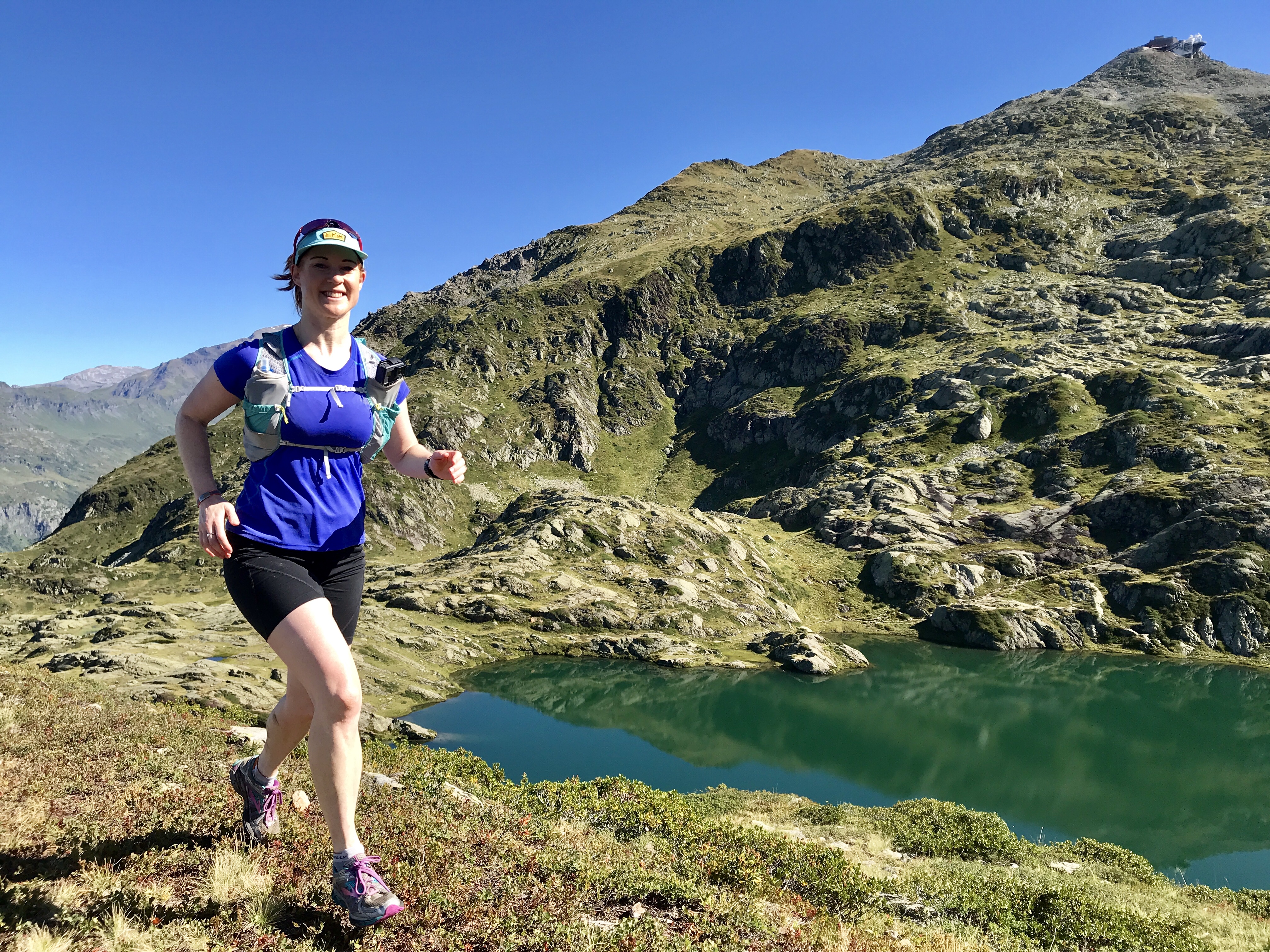The best cheap running shoes 2025: wallet-friendly buys that will take you further on the trails and the road
There's no need to break the bank when picking up a new pair of rides – the best cheap running shoes have been tested and rated by our experts
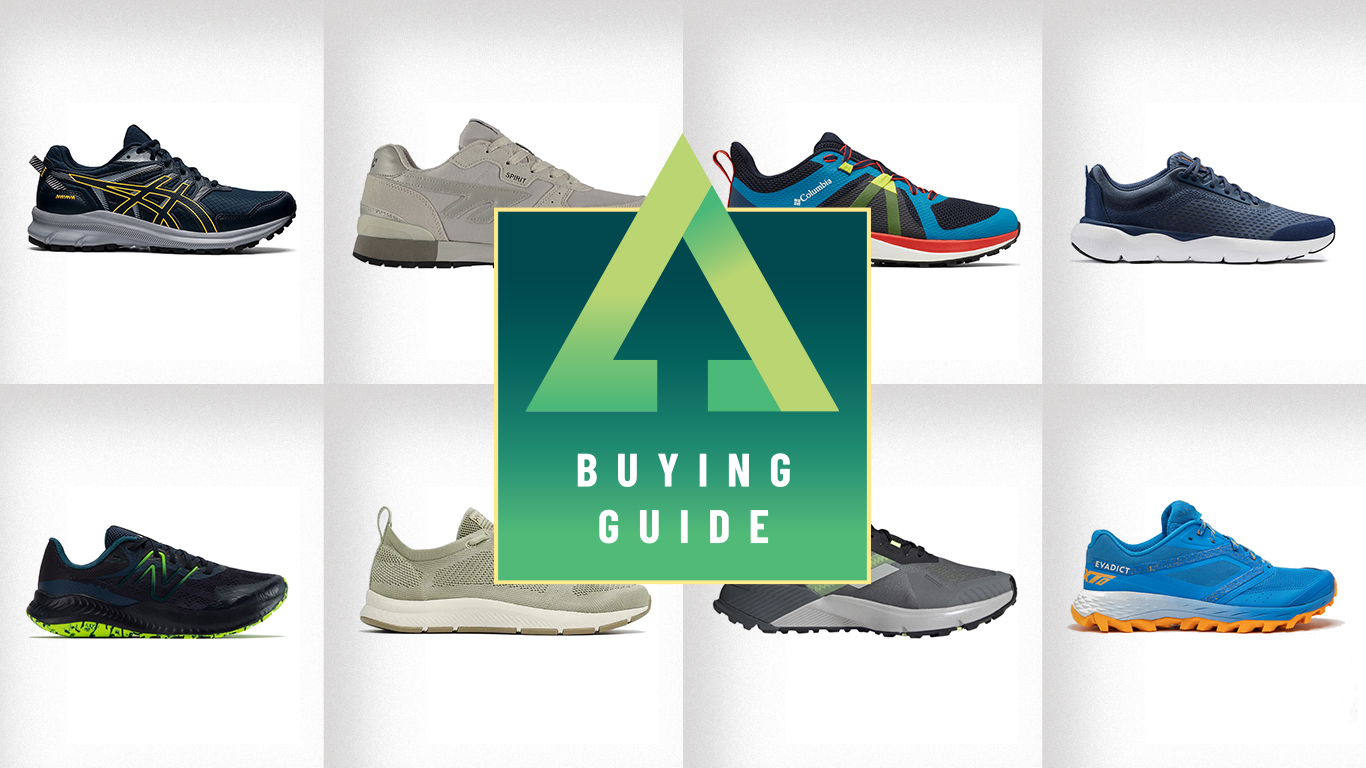
Whether you're new to running, coming back to the sport after a break, or simply like to shop smart, the best cheap running shoes still deliver where it counts: comfort, support and durability.
In this guide, we're showcasing the finest budget all-terrain options and road running shoes, as well as trail options that rival the best trail running shoes. A competitive price doesn't always have to mean compromise, and we've sifted through the chaff to find the best on the market so you can start your search with confidence.
We've considered fit and sizing as well as cushioning to work out how comfortable you'll feel when pounding the paths. And we've assessed grip and stability so you know what type of terrain they can handle.
As high-end brands continue to invest heavily in research and technology development, you can be sure this know-how trickles down to running shoes with lower price tags. You can still expect grippy soles, breathable fabric and great cushioning to absorb impact.
Before you buy, decide on what type of trails you'll be tackling most, and what type of conditions you'll encounter.
If you’re looking for more specialist runners, check out the best trail shoes for ultra runners and the best winter running shoes.
The quick list
This is the quick list, a snapshot of the best cheap running shoes available in 2025. To delve deeper into the features and qualities of each featured pair, see our more detailed reviews further down the page in this guide.
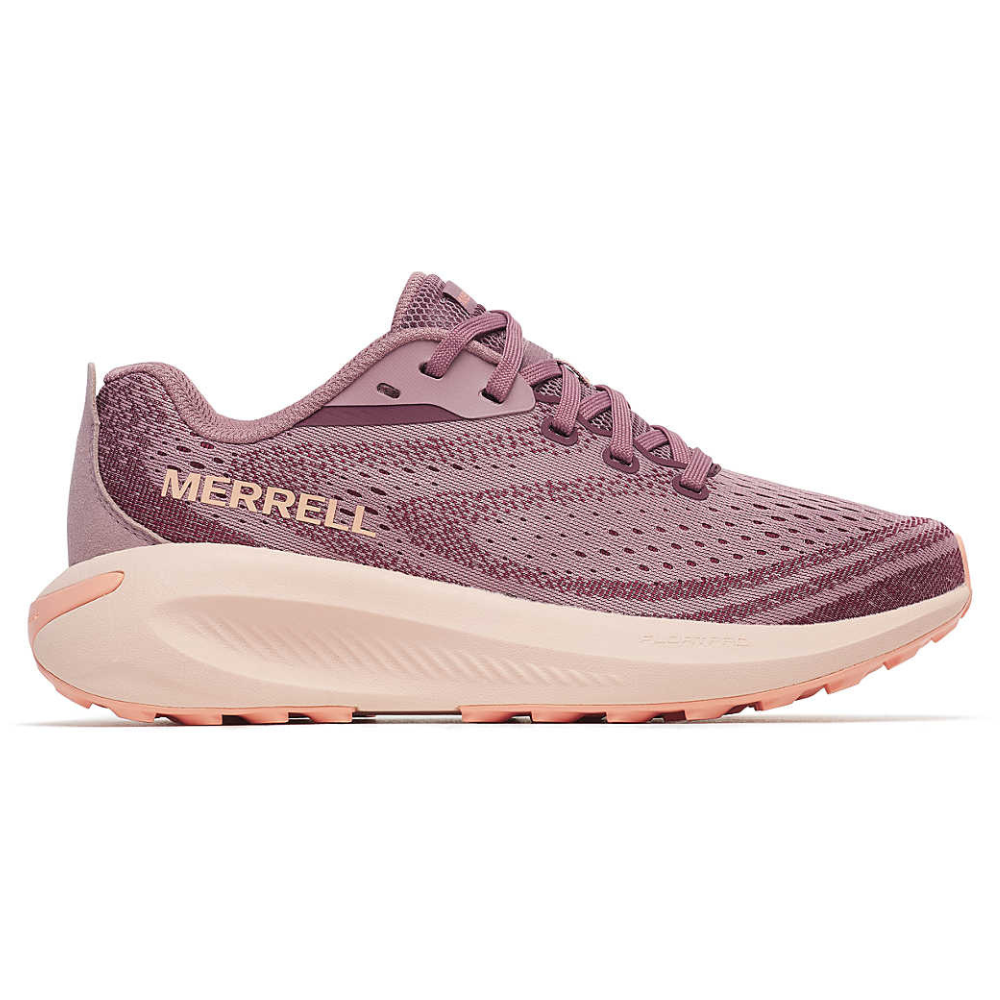
Go from road to trail in these light running shoes, built with enough cushioning to handle tarmac as well as the grip you need for forest trails, gravel paths and sandy stretches.
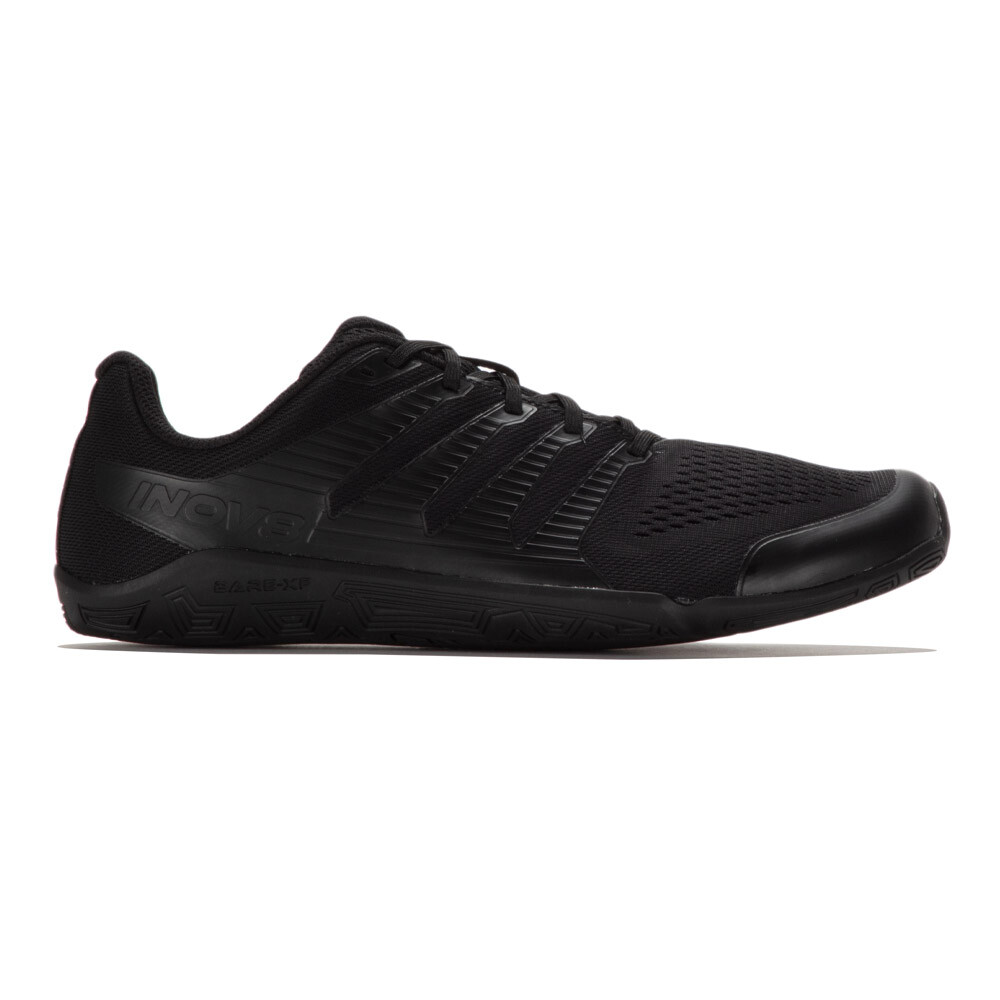
Stay agile on the trails in these super-lightweight shoes that provide just enough traction and protection for easy trails. They may be at the top end of 'budget' but they will last.
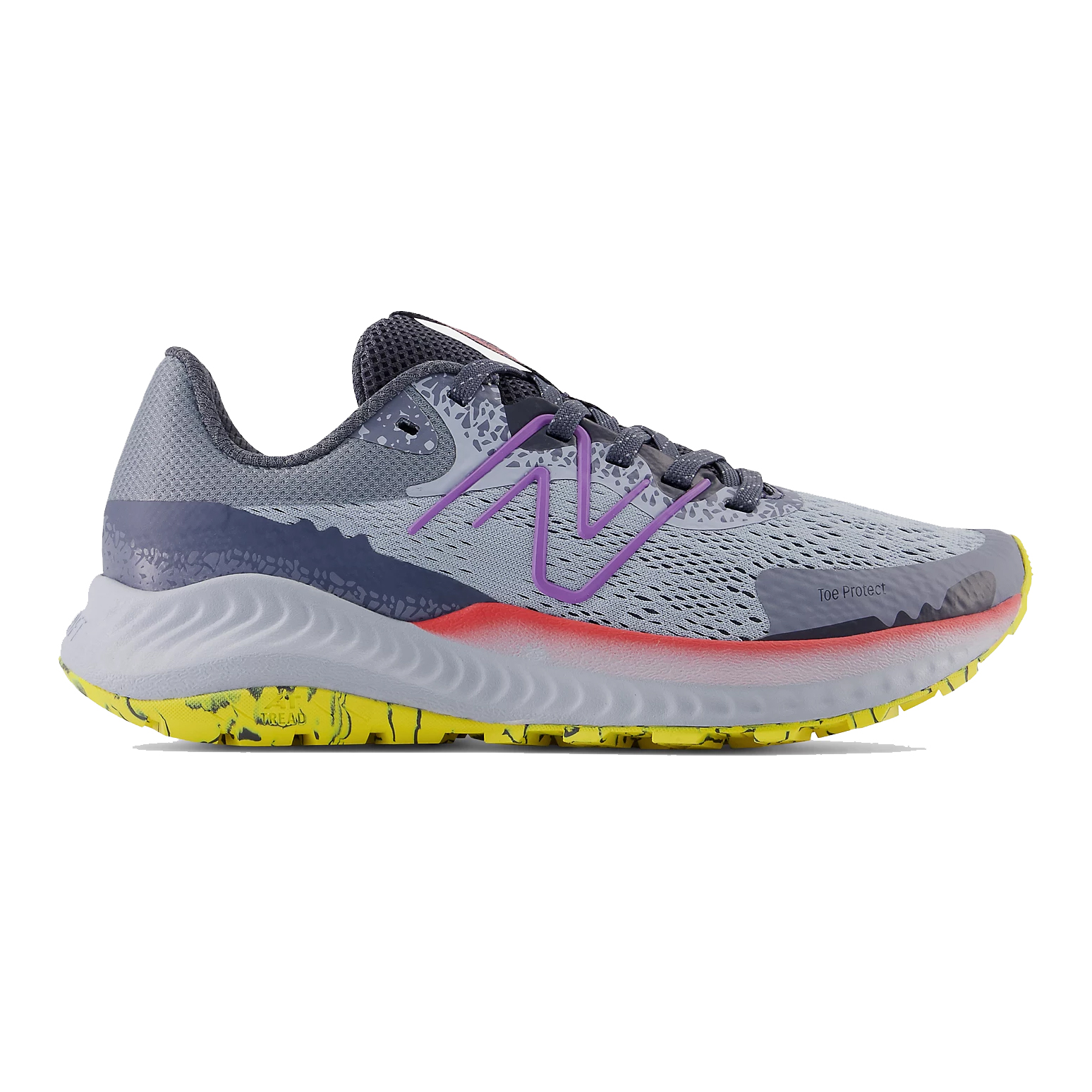
We love this light, flexible, bouncy road and trail running shoe that will carry you over any distance on any terrain, giving great grip on off-road surfaces
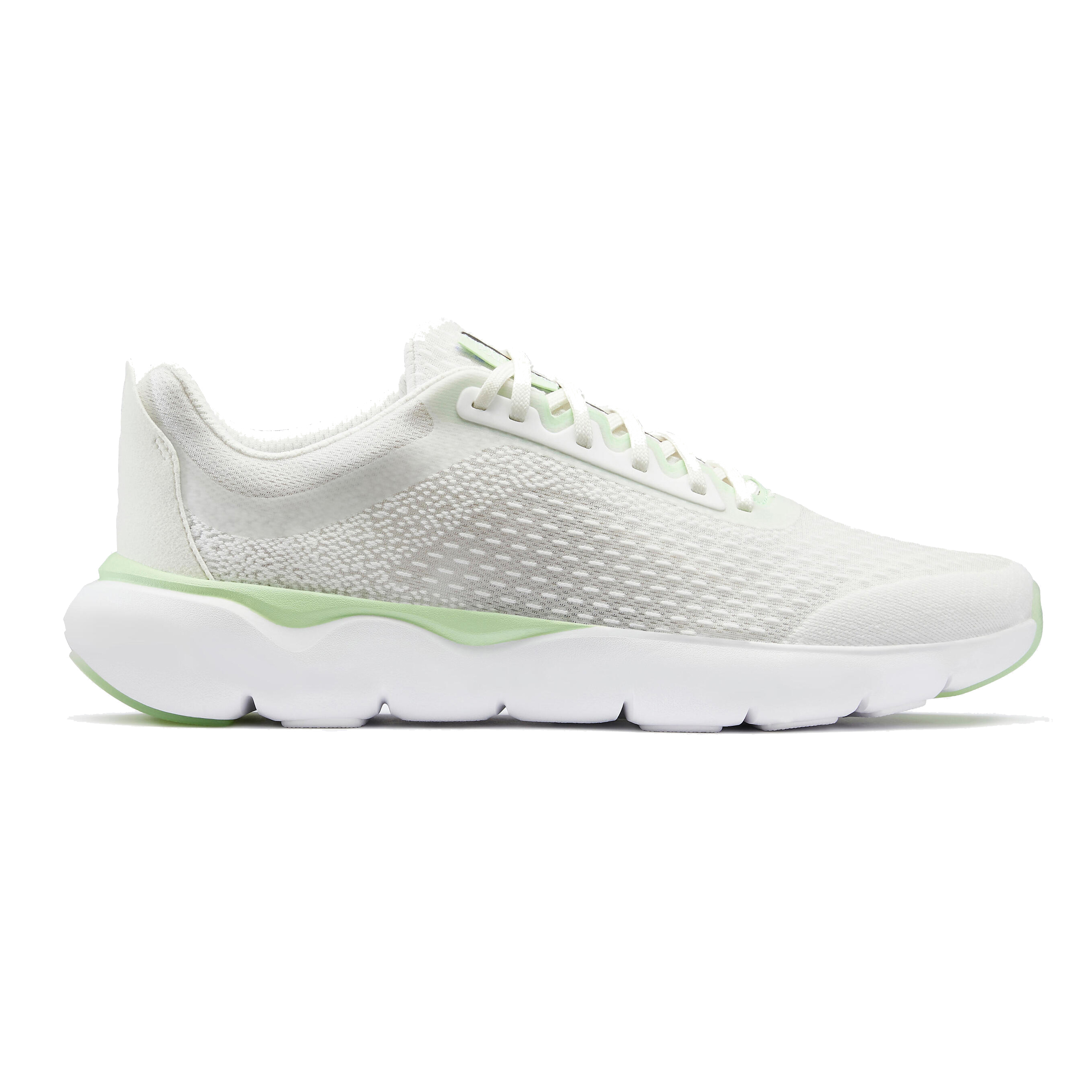
Super low-priced, very light road shoes for runs up to 10k in distance that we found were well ventilated for warm weather
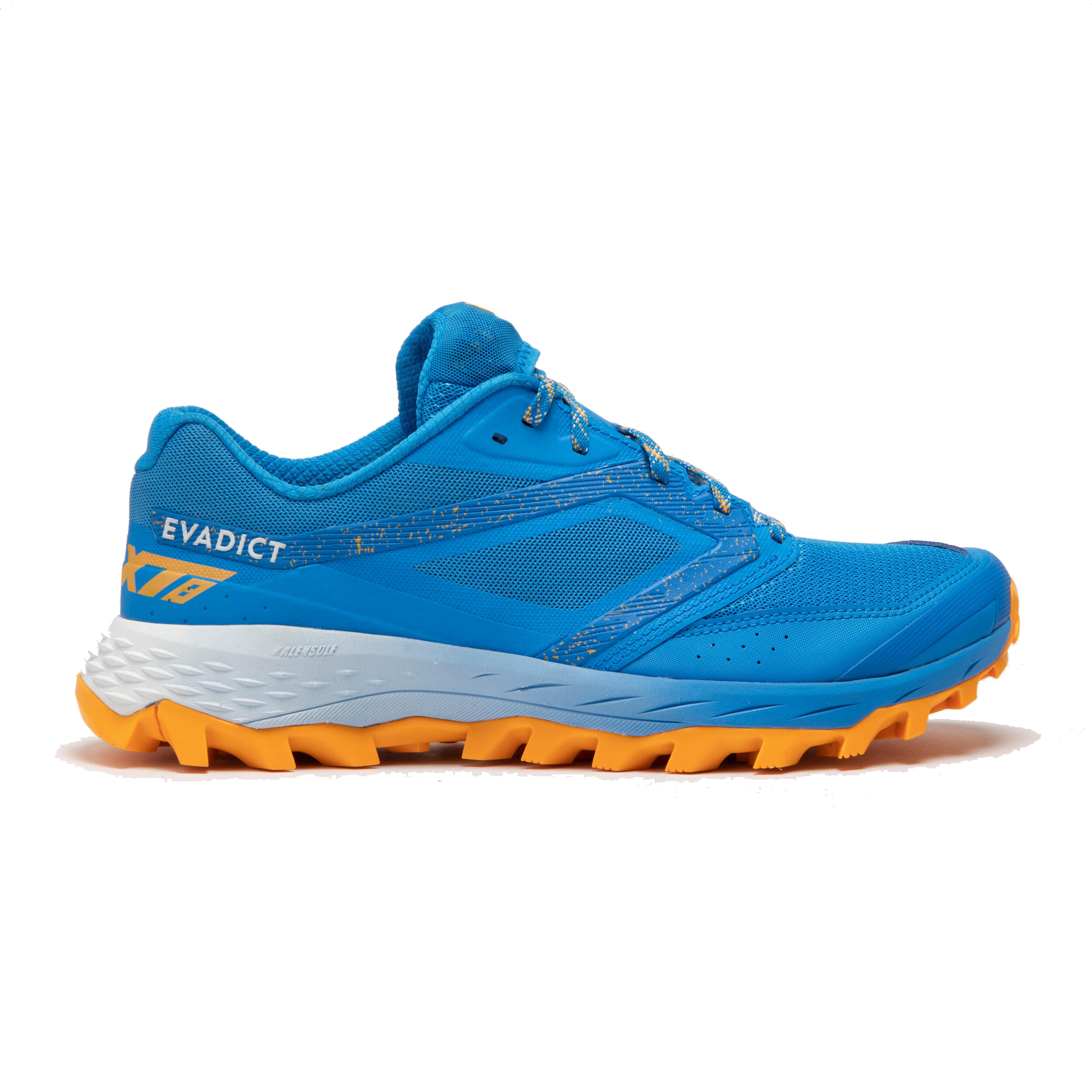
A great value, robust trail running shoe, which we found gave us excellent grip and enough padding to take care of our feet on an impressive range of terrain types
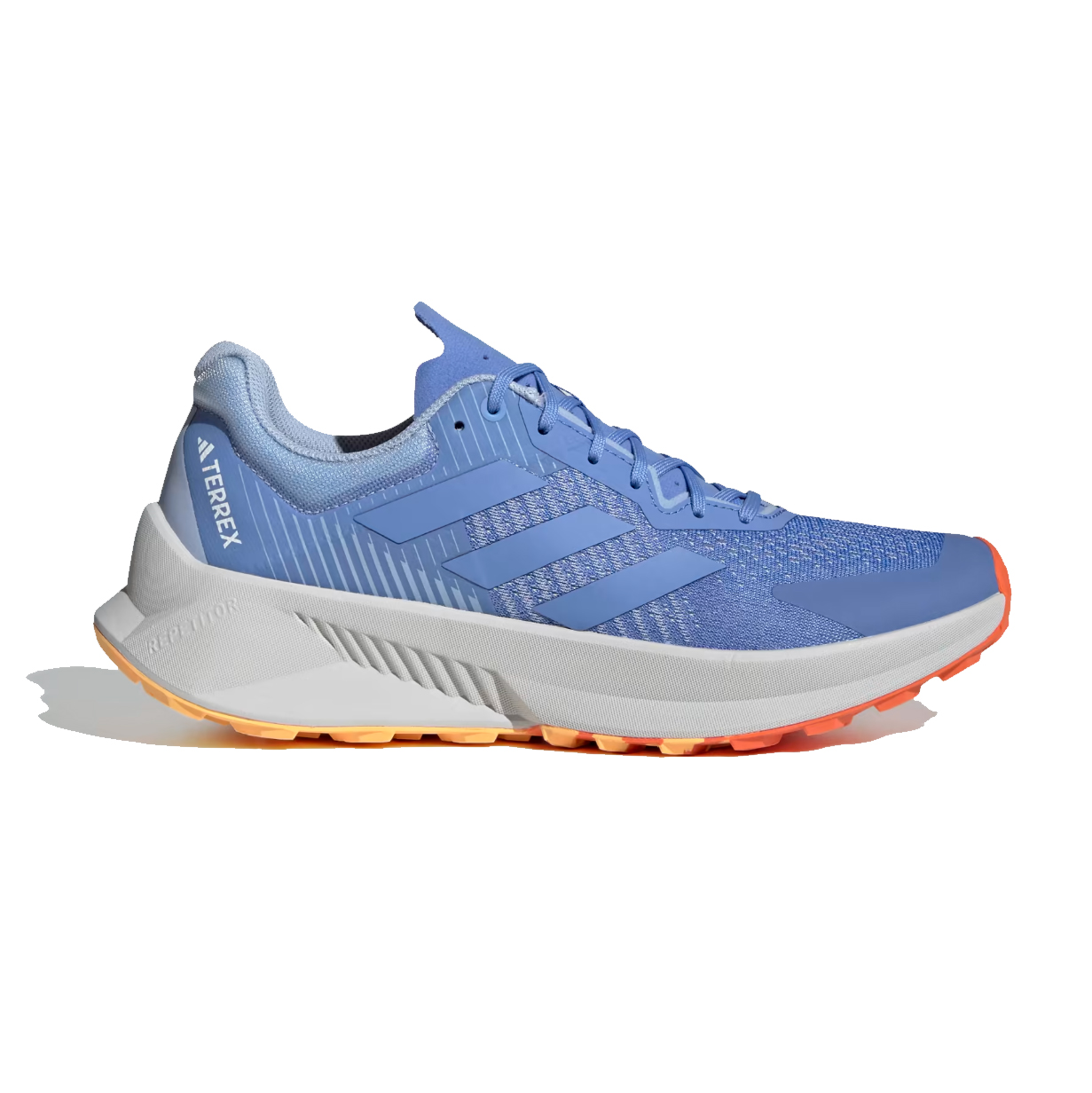
We like the recycled content in this robust, good-value shoe that’s comfy and padded enough for roads and but with some grip for trail running too
The best cheap running shoes comparison table
Budget running shoe | Price | Drop | Best use |
Merrell Morphlite | $110 (US) / £100 (UK) | 6.5mm | Trail running |
Inov8 Bare-XF | $120 (US) / £115 (UK) | 0mm | Dry weather and sealed-surface barefoot running |
New Balance DynaSoft Nitrel V5 | $70 (US) / £90 (UK) | 8mm | Any distance, multi-terrain |
Kalenji Jogflow 500.1 Running Shoes | $40 (US) / £35 (UK) | 4mm | Road up to 10k distance |
Kalenji Evadict XT8 Trail | $75 (US) / £70 (UK) | 8mm | Long distance, off-road running over soft, muddy ground |
Adidas Terrex Soulstride | $80 (US) / £85 (UK) | 10mm | Roads and trails in most conditions |
The best cheap running shoes 2025
You can trust Advnture
The best cheap running shoes overall
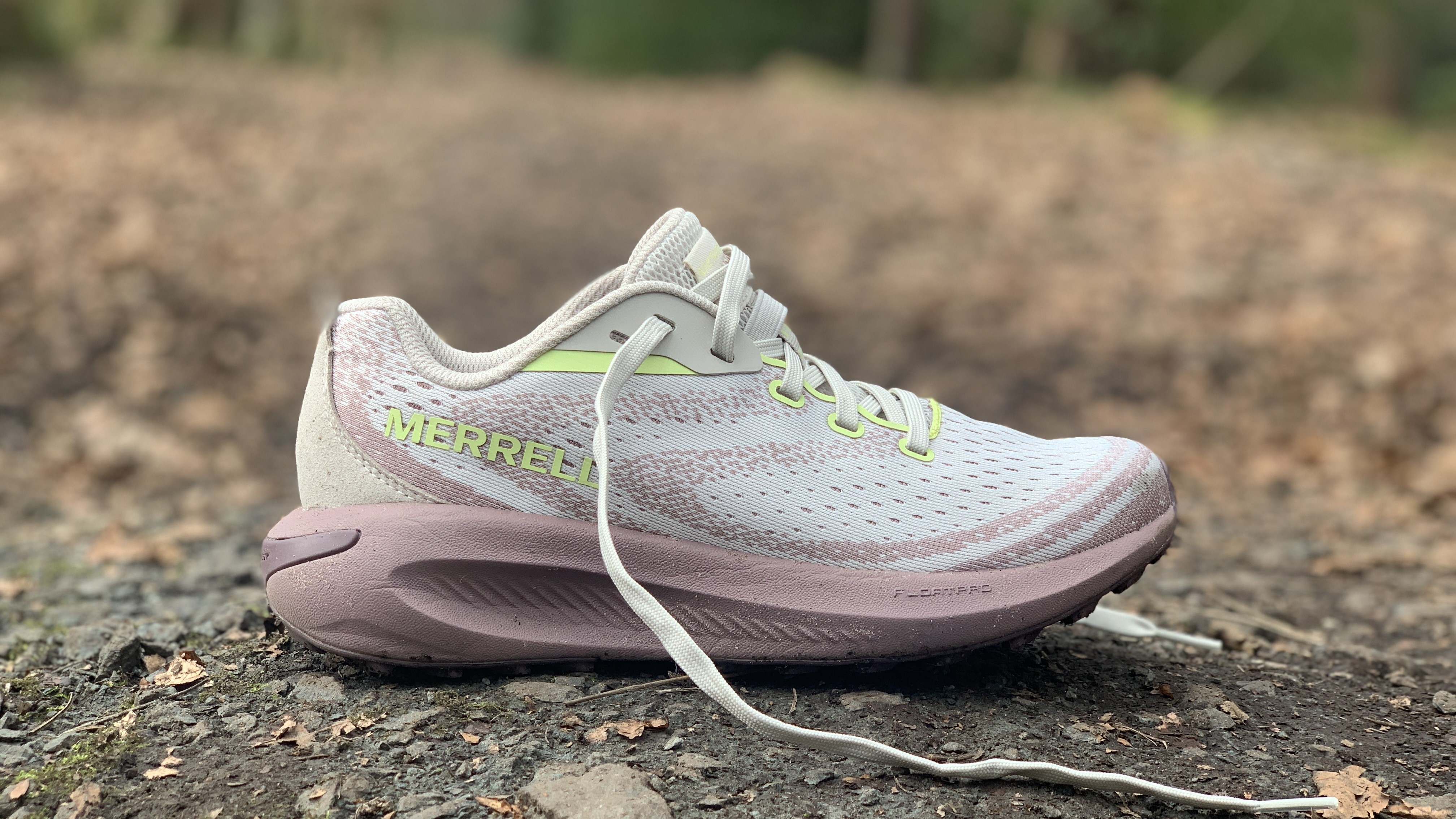
Specifications
Reasons to buy
Reasons to avoid
Straight out of the box, these shoes impress with their secure fit that give a comfy, locked-in feel and spacious toe box, which allows your toes to flex and spread. Despite the sock-like construction, you can pull them on easily.
The foam midsoles are light and moderately cushioned – just enough to make road running comfortable without dulling trail feel when you get off the path, and enough to keep you comfy on longer runs.
Our trail runner Julia Clarke tested the shoes on rolling gravel trails, forest paths and on a hard-packed beach. The 3mm lugs gave just the right amount of traction, especially on the sandy stretches.
"Once you hit the trail there's some trail feel, while the wide geometry keeps you pretty stable on uneven trail," she said.
The breathable uppers are a big plus, keeping your feet cool even as the weather warms up and keeping the shoes ultra-light. They are a strong choice for long-distance runs or travel where space and weight matter.
For runners who split time between road and trail, or city dwellers who love weekend backcountry escapes, these shoes are a smart option. While they're not the most rugged trail shoes, they should wear well and perform even on long trail runs.
Read our full Merrell Morphlite review
The best cheap barefoot running shoes
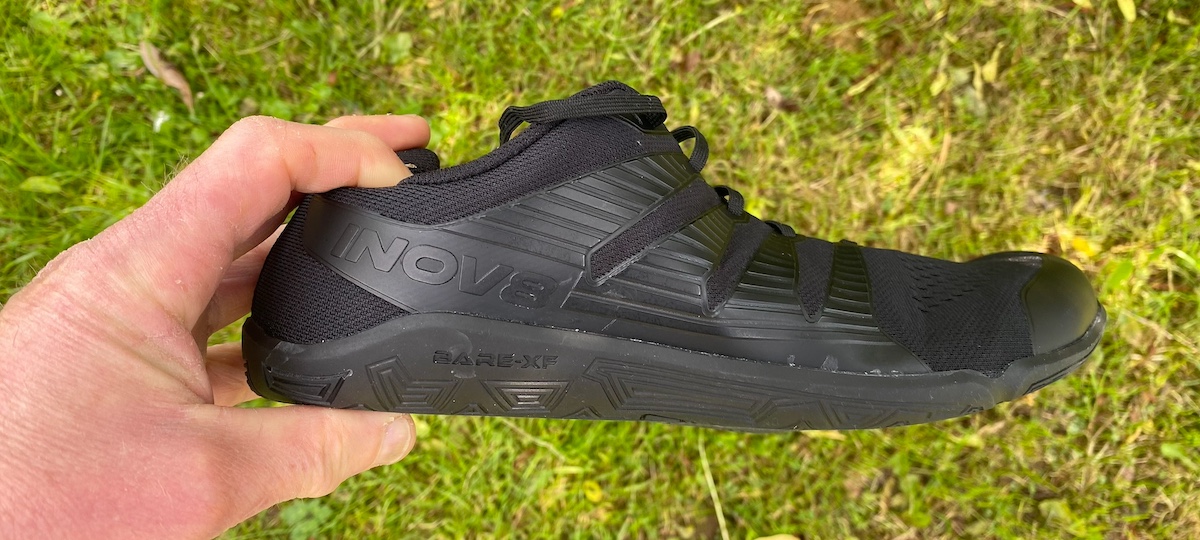
Specifications
Reasons to buy
Reasons to avoid
The price tag may be at the top end of 'budget', but if you love the barefoot feel, this shoe is one of the more competitive, and we love how it performs on the trails.
Despite its stripped-back build, the 2.5mm sticky rubber outsole provides decent grip on dry trails and rocky paths – although, it won't handle mud or terrain that's too technical. There's no midsole, but a 6mm footbed adds some cushioning. A small toecap and outsole that extends onto the upper offer some protection from trail hazards.
The fit is comfy, with a roomy toe box and flat laces to secure the shoe. The heel and tongue are slightly padded for comfort.
Our expert tester Pat Kinsella tested the shoes on light trails, gravel paths and a pebbly coast route. He says: "I’ve been massively impressed with the agility of these lightweight shoes, which actually make me feel remarkably light on my feet."
He liked how quickly they drain, too. "I’ve started wearing them for my morning run-swim-run," he says, "and the Bare-XF are brilliant, because I can wear them for both the run and the swim.
All-in-all, the full barefoot deal for those who want to run light off road.
Read our full Inov8 Bare-XF review
The best cheap all-terrain running shoe for propulsion
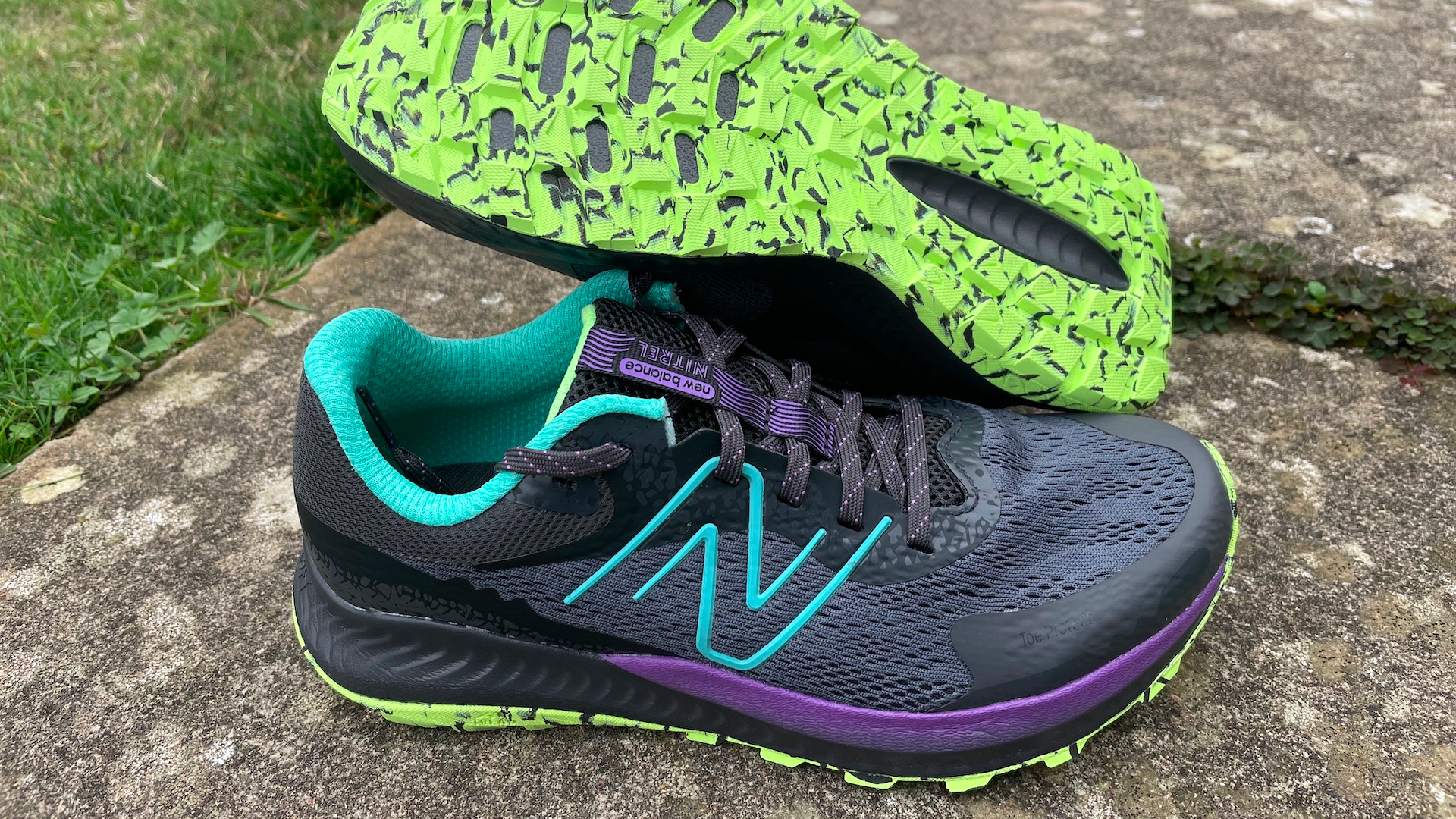
Specifications
Reasons to buy
Reasons to avoid
The New Balance DynaSoft Nitrel V5 is nudging the top end of the affordable shoe price range but for this you get a lighter, more flexible shoe straight from the box.
The fit is slightly small, we advise going up a half size so your toes don’t brush the end when running downhill. The drop is a nice, middling 8mm from heel to toe so even if you’re used to a more traditional trainer with 10-12mm drop you will probably be fine to use these without straining your lower legs.
The EVA foam midsole is bouncy for a propulsive ride. It’s good to see that 3% of it is bio-based content (made from plants or renewable materials); it’s not a great deal but it’s better than 0%. The AT Tread outsole works well on both roads and trails to give a very versatile running shoe.
"A fantastic pair of road and trail running shoes that are comfy straight from the box," says our expert reviewer.
Read our full New Balance Dynasoft Nitrel V5 review
The best cheap road running shoe
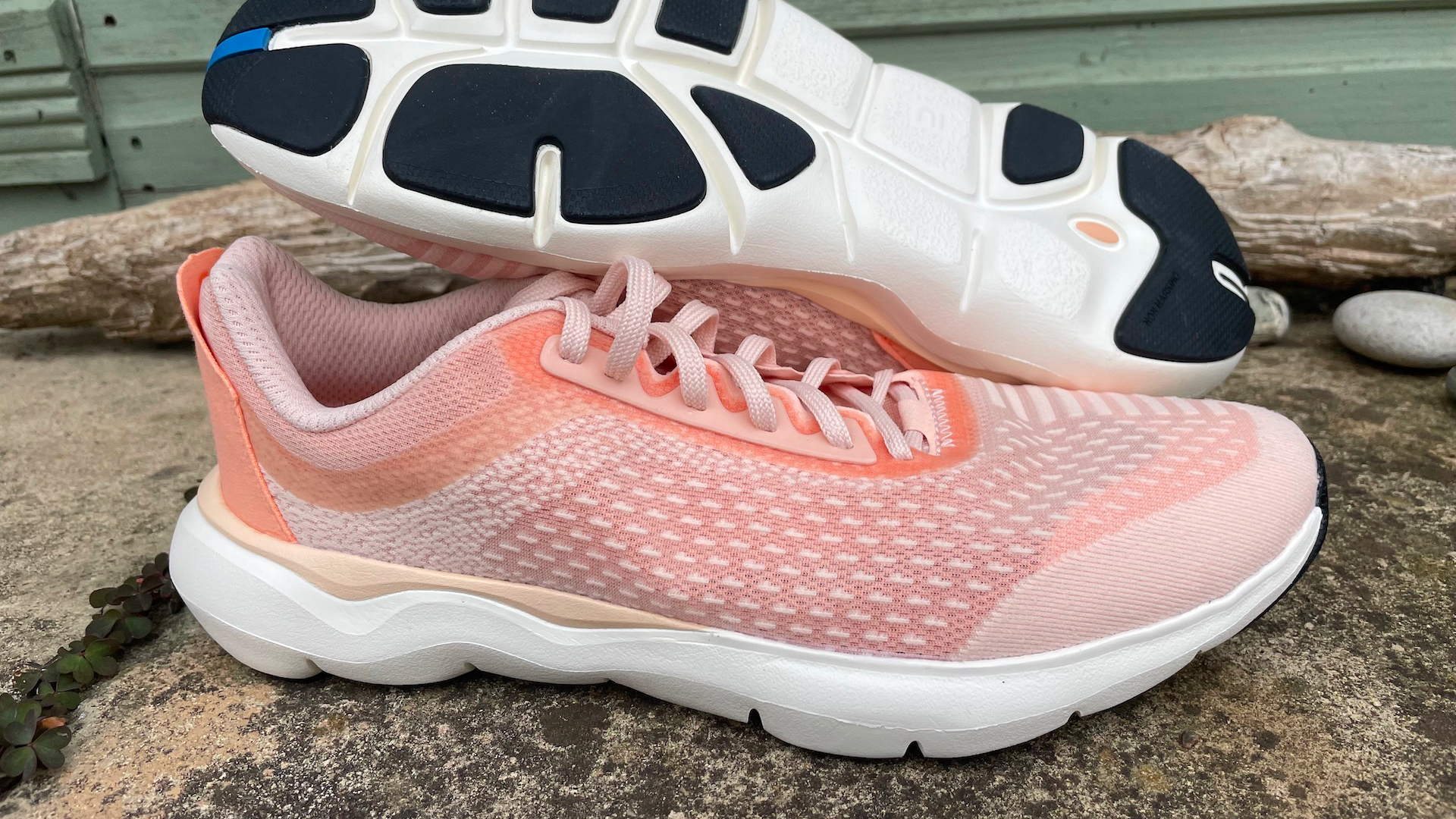
Specifications
Reasons to buy
Reasons to avoid
"I can’t believe this shoe costs so little and yet performs so well," said our expert reviewer. The Kalenji Jogflow 500.1 Running Shoes are a beginner or budget runner’s dream. At only £35 / $40 they are the lowest-priced running shoe in this test yet they punch well above that price point with a lot of great features.
Firstly, they’re extremely light at only 426g / 15oz which is well under average for a running shoe and helps you to pick up your feet faster and more easily. The toe box feels wide despite the pointy design, but this may be because the fit comes up slightly on the large size so you may wish to try a half size smaller.
The laces, although skinny, do create a secure fit. The EVA foam in the midsole is bouncy enough for the 10k they are designed for, they have a 4mm drop heel to toe (transition slowly if you’re used to traditional trainers with 10mm drop) and the Flex H sole is grippy on wet and dry pavements and roads.
The insole is 29% recycled and the uppers are 56% recycled which is great, but the latter are a very breathable mesh so this may not be the shoe for cold, wet winter runs.
Read our full Kalenji Jogflow 500.1 review
The best cheap trail running shoe
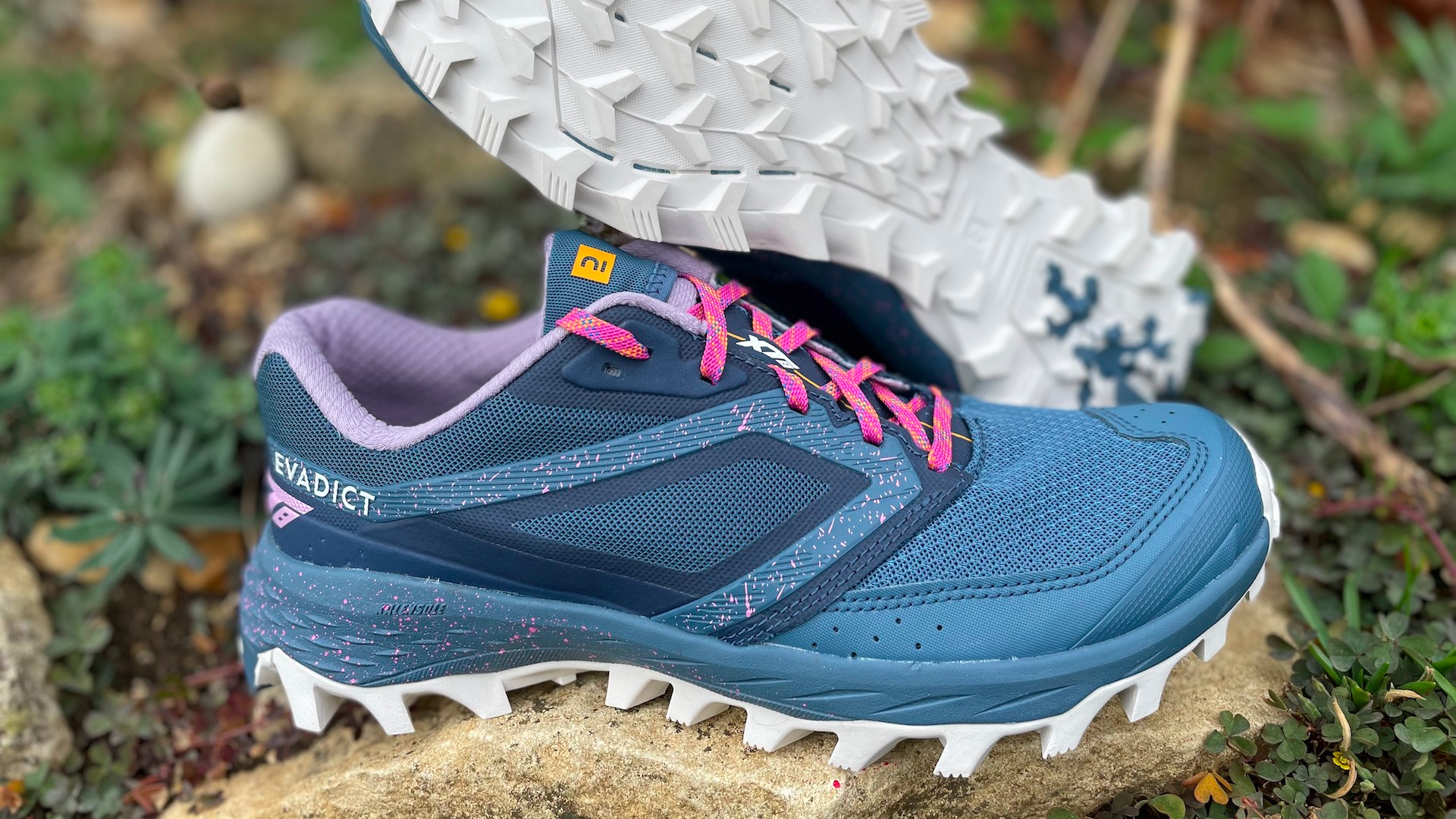
Specifications
Reasons to buy
Reasons to avoid
At half the price of the average trail running shoe in today’s market, the Kalenji Evadict XT8 Trail has a lot going for it. Indeed, it's "worth getting excited about," according to our expert tester.
Firstly the grip – widely-spaced, deep 5mm lugs in a chevron design similar to the Salomon Speedcross versions 3-5. These bite into deep mud and soft ground with excellent traction and shed it quickly once you’re on to less gloopy paths. The cushioning is Kalenji’s own and it allows you to feel much of the trail beneath your feet without too much padding to block the response. You can run on roads for short distances in these but it’s really a waste of those impressive grips; these are mainly for off-road use.
The laces ensure a very snug fit to cope with terrain at all angles; there’s no chance of your foot moving about inside this shoe. The only downside from the more expensive trail running shoes that we can see is that they weigh slightly more than average, by approximately 35g on each foot. They come up ever so slightly long so you may want to order both your usual size and a half size smaller, then keep the pair that fits best. If this shoe fits comfortably, it’s an absolute bargain – buy immediately!
Read our full Kalenji Evadict XT8 Trail review
The best cheap running shoe for recycled materials
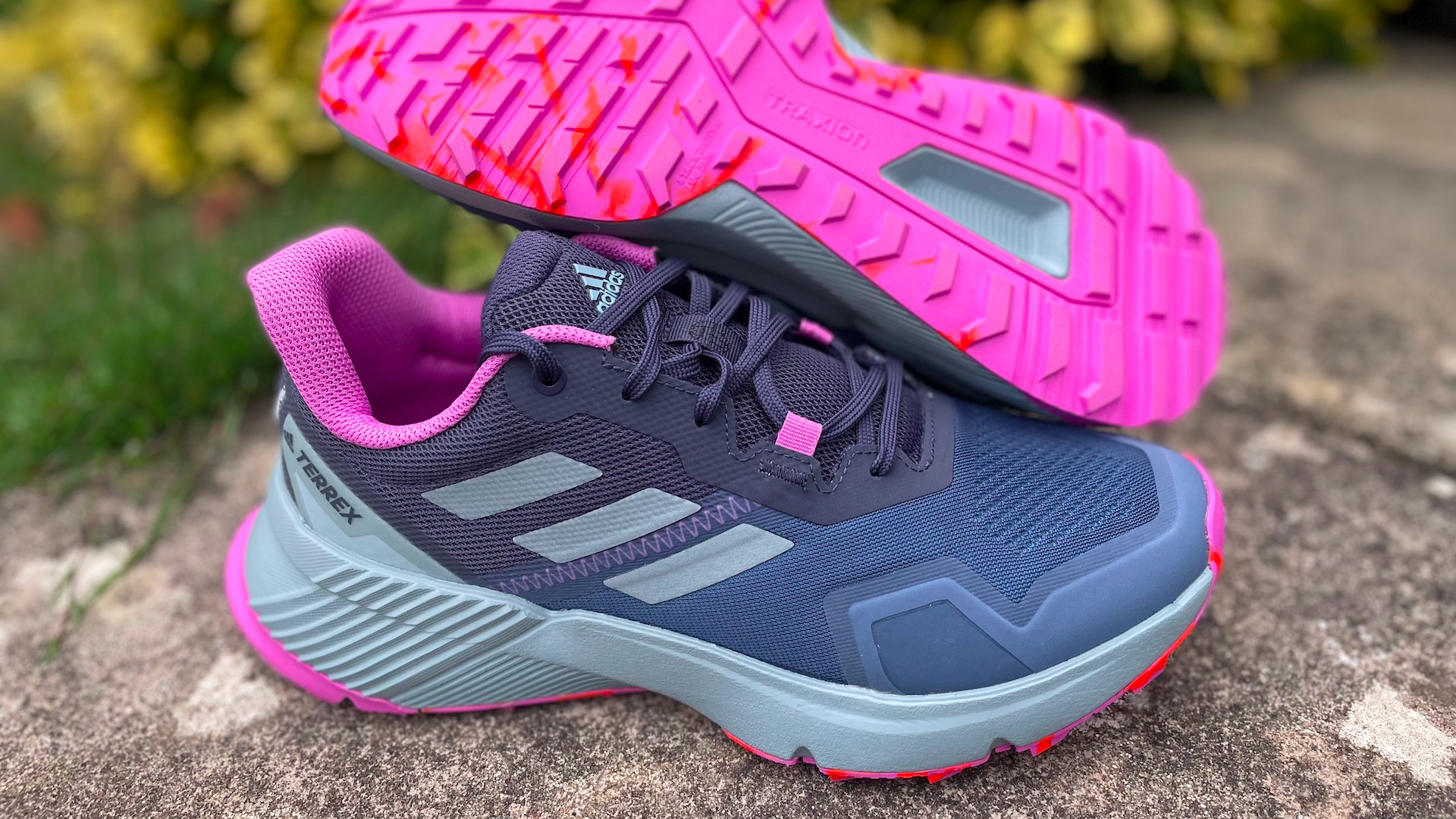
Specifications
Reasons to buy
Reasons to avoid
The Adidas Terrex Soulstride is very comfortable straight from the box with a padded tongue and traditional laces that keep your foot snug. For our tester, "they really were a joy to wear on wet or dry pavements."
The toe box is fairly wide but this is quite a big-feeling shoe so you might want to order both a half size smaller plus your regular trainer size, and send back the one that fits least well. This large sizing might go some way to explaining the weight – this shoe is 100g / 3.5oz heavier than average. Despite this there’s a comfy, very bouncy ride from the EVA midsole and sides of the outsole come up high around the upper for added stability if you wish to take this shoe off road.
The Adidas Traxion grip is designed for great traction on both roads and easy trails, with its 3mm lugs are widely spaced to allow mud to drop out. The drop from heel to toe is 10mm so this is perfect for those used to traditional road running shoes which usually have 10-12mm drops. One feature that we’re glad to see is that the upper contains a minimum of 50% recycled material.
Read our full Adidas Terrex Soulstride review
How we test the best cheap running shoes
All of the shoes reviewed here were put through their paces on roads and trails, with our tester running in a variety of conditions and over different distances, to see how they felt on the feet and performed in the field.
We tested specific features (including cushioning, waterproofing, breathability, grip, foot support, toe and heel protection and materials used) against brand claims. We assessed factors such as durability, environmental impact and value for money.
Meet the testers
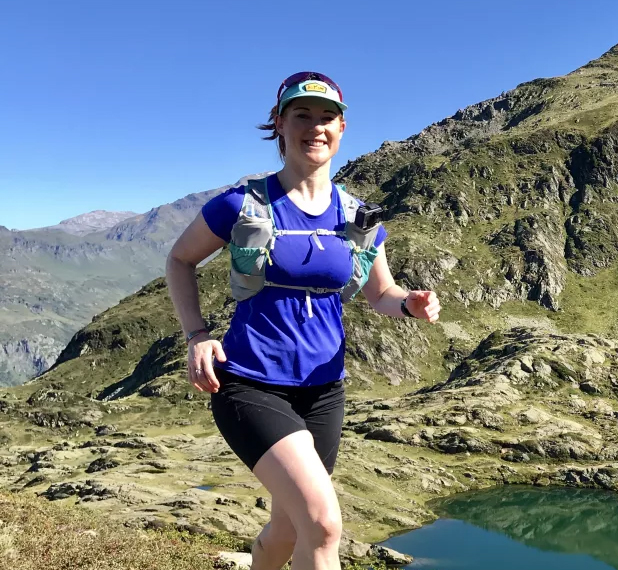
The co-founder and former editor of Trail Running magazine, Claire now runs the YouTube channel Wild Ginger Running, creating films packed with trail- and ultra-running content. An expert when it comes to trail running shoes, road to trail shoes and road shoes, Claire gives every pair she tests a good thrashing while clocking up the hard miles.
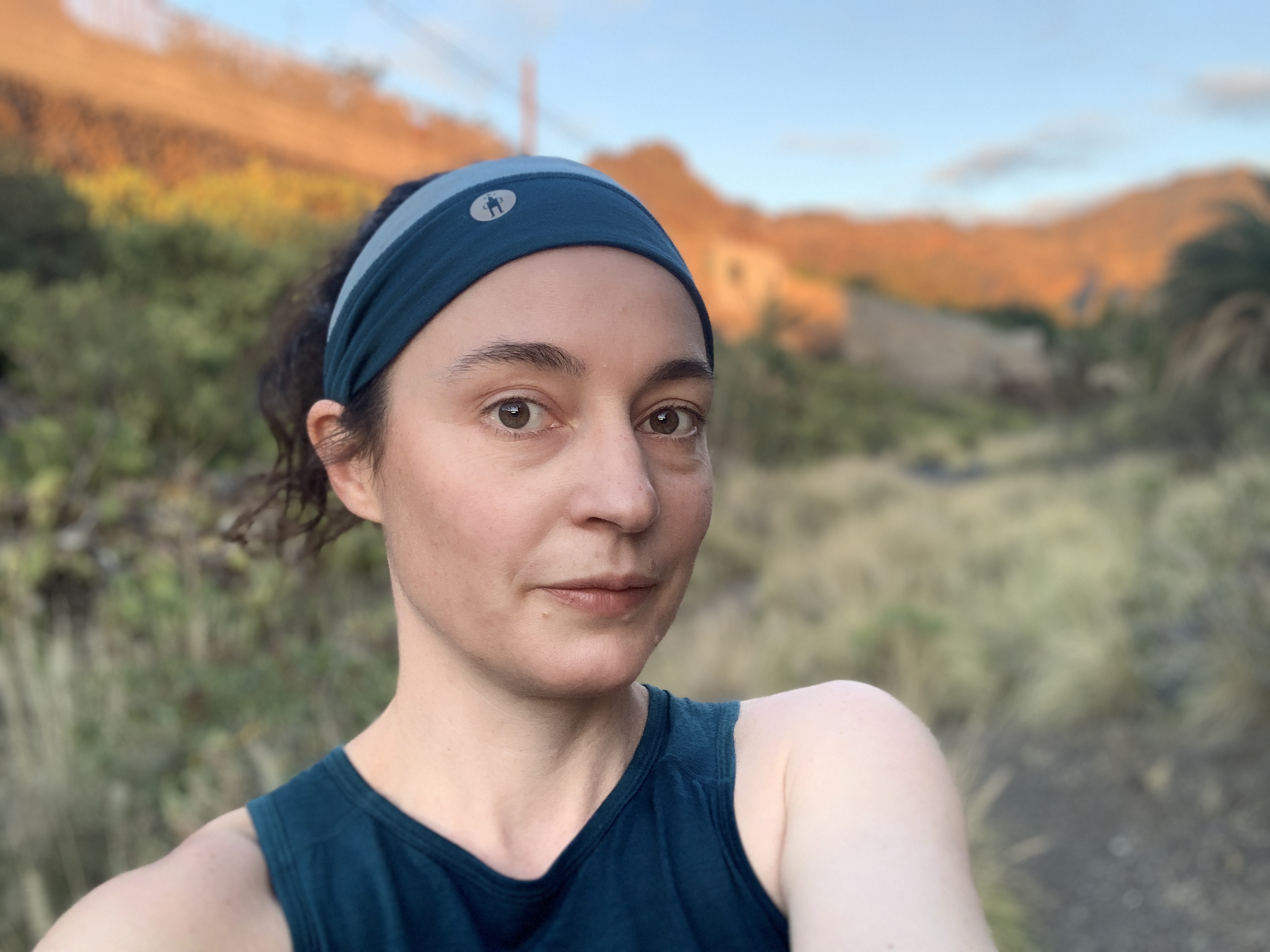
Julia is an author, trail enthusiast and yoga teacher who loves heading uphill on foot, ski, bike and belay. She recently returned to her hometown of Glasgow, Scotland after 20 years living in the USA, 11 of which were spent in the rocky mountains of Vail, Colorado where she owned a boutique yoga studio and explored the west's famous peaks and rivers on foot. These days, she explores the majestic Scottish countryside with her running escapades.
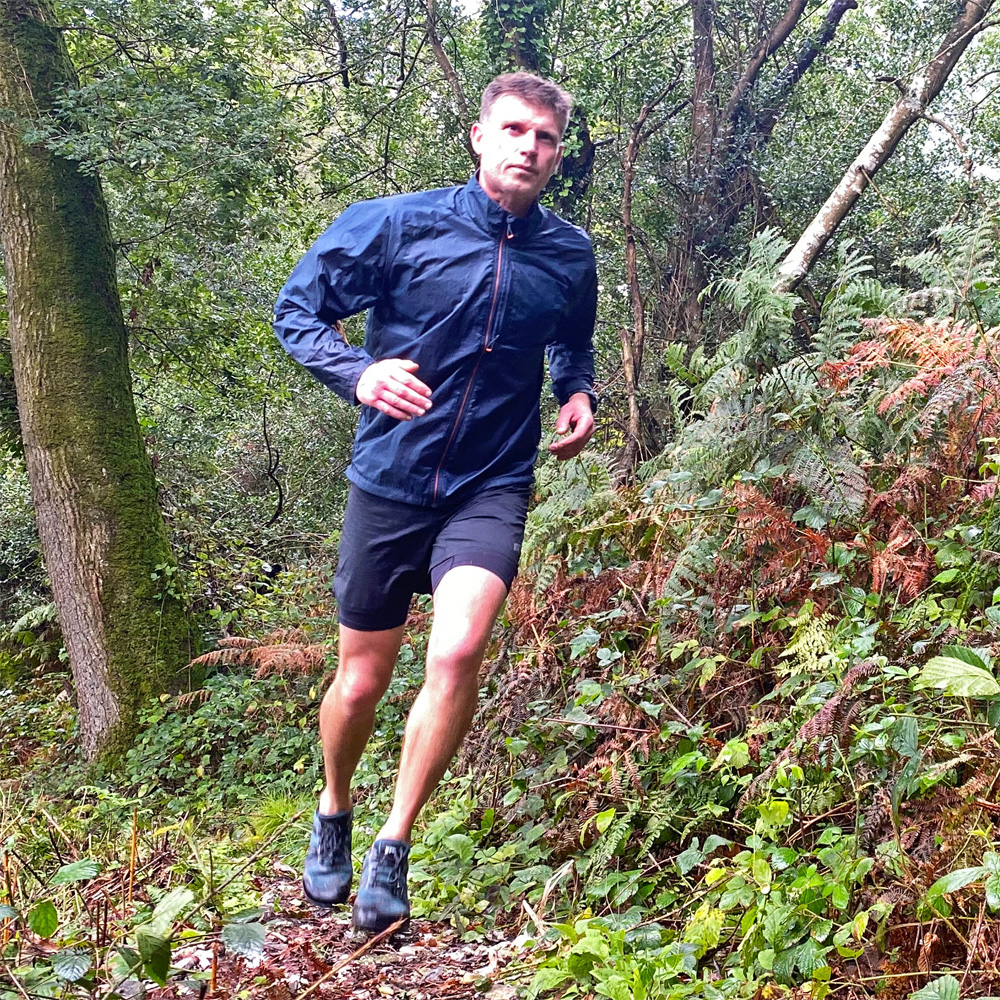
Writer, editor and enthusiast of anything involving boots, bikes, boats, beers and bruises, Pat has spent 20 years pursuing adventure stories. En route he’s climbed Mont Blanc and Kilimanjaro, run an ultra across the roof of Mauritius, and set short-lived records for trail-running Australia’s highest peaks and New Zealand’s Great Walks. He can often be found pounding Devon's coastal trails in the south of England.
How to choose the best cheap running shoes
You may be looking for affordable running shoes but you still don’t want to compromise too much on comfort, performance and durability, so there are a number of factors to consider when it comes to making your choice (maybe even how eco-friendly the shoes are might be one of your priorities).
If you’re just working out how to start trail running, it's important to invest in a shoe that works for you. Because choosing the wrong pair could result in a trail running injury. If your local trails are steep, rocky and often wet, then prioritize a shoe with good lugs offering great grip. If you’re going to be doing a bit of road running en route to your nearest trails, perhaps choose a shoe with a less aggressive outsole that can cope well with both sealed and unsealed surfaces.
So, before you buy, consider the following...
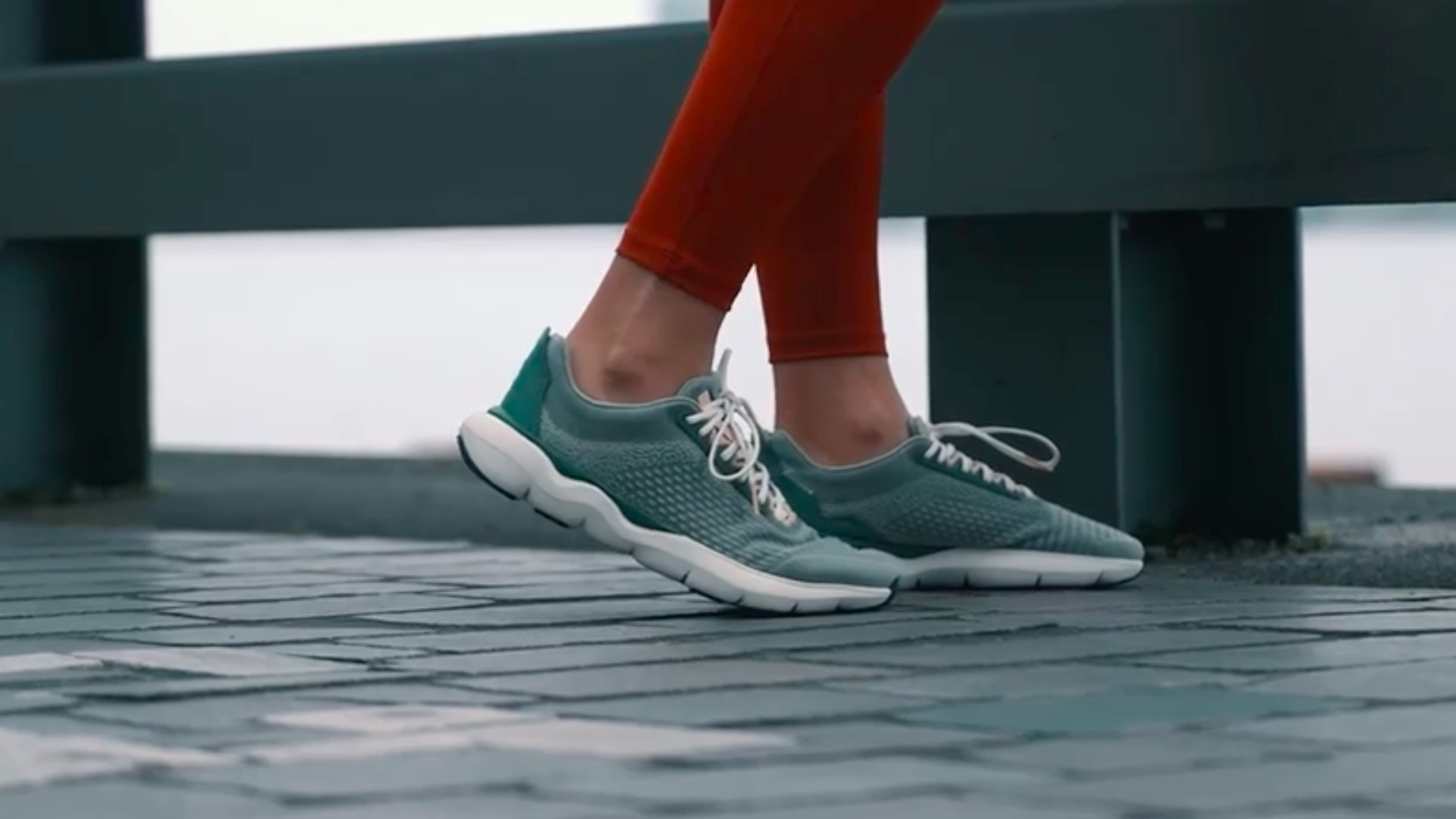
Fit and sizing
We’ve tried to give an impression of the sizing and foot-shape suitability of each shoe in our reviews to help you select one or two pairs that might fit the best. Try before you buy, if possible, while wearing your favorite trail running socks to really find out which fit the best.
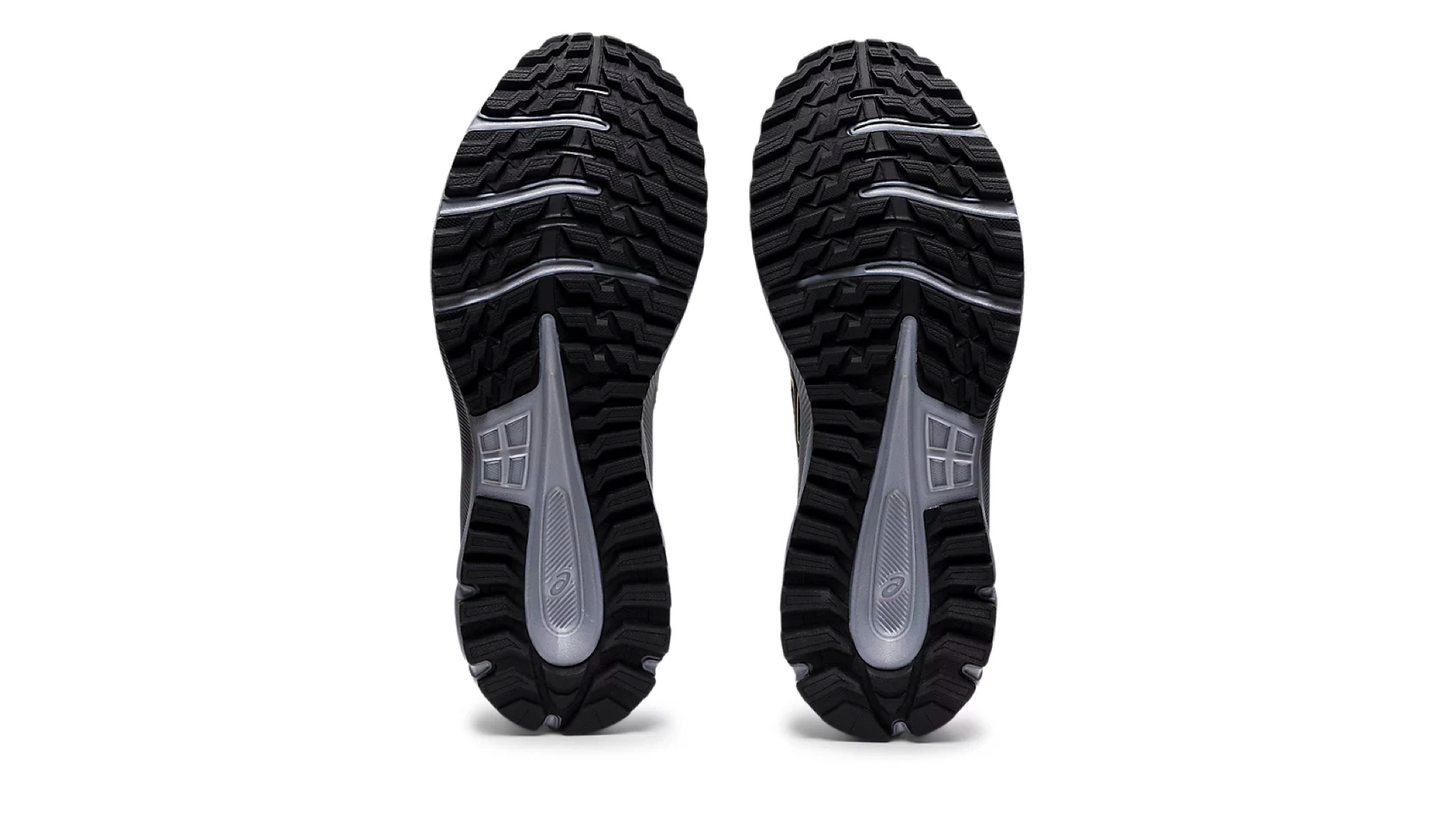
Grip
This depends on where you do most of your running: shoes with very deep lugs (like 5mm+) are great for off-road running on soft ground and sloppy mud; 3-4mm are great for road-to-trail shoes where you will have a mix of terrain; and 1-2mm lugs or just smooth rubber patterns on the outsole are best for road running where you don’t need to bite into the ground but still need traction to move forward without slipping, especially in the rain. (See also: Running in mud.)
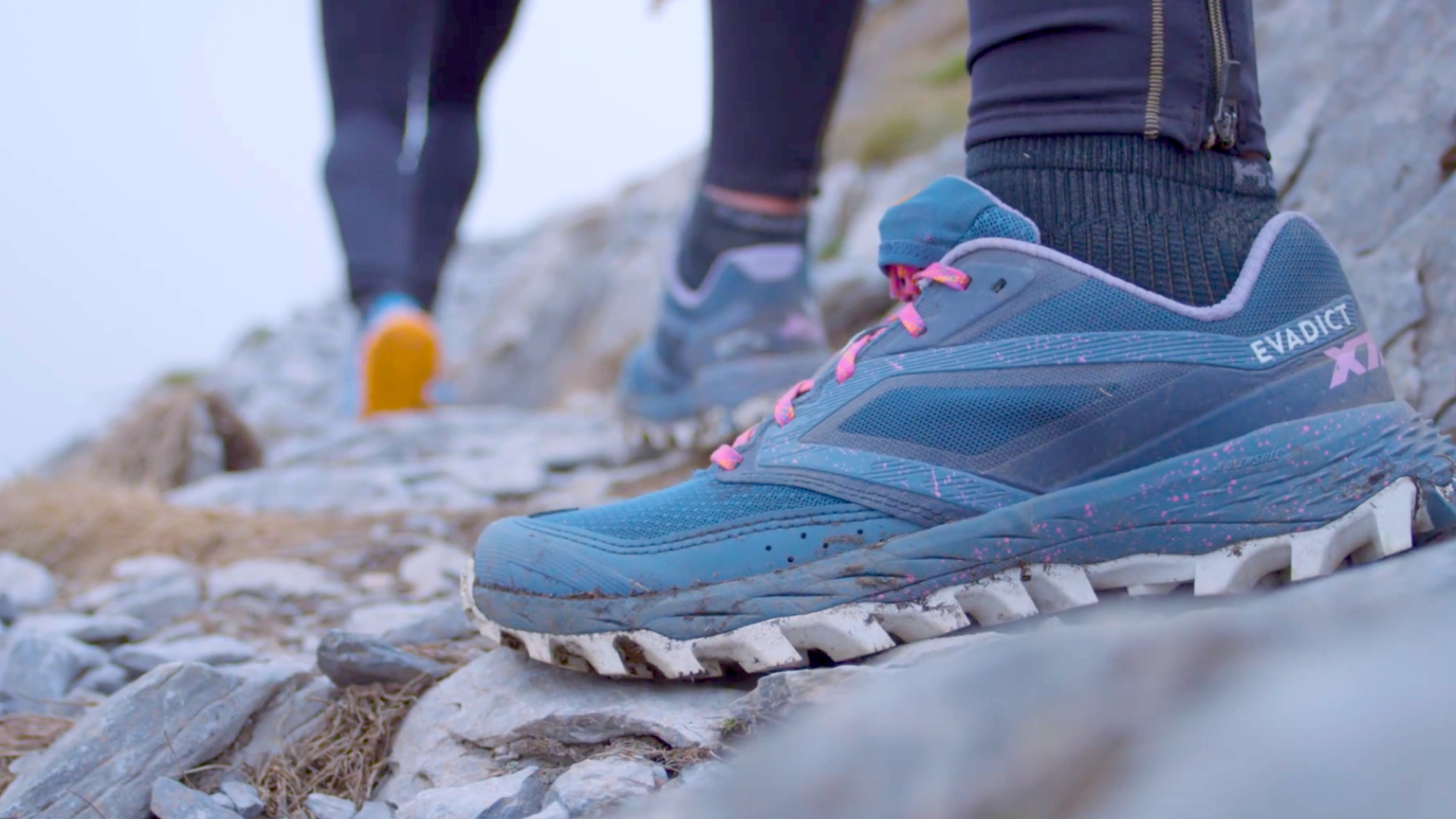
Cushioning
This also depends on where you want to run. Go for more padding for tarmac pavements, roads and hard-packed gritty tracks, but you will need less on softer ground and uneven trails so that your foot can flex and respond quickly and easily to the terrain underfoot.
Drop / stack
This is the height difference between the heel and toe of the shoe, usually expressed in millimeters. Many more traditional road running shoes have around 10mm heel to toe drop so you’re running on a sort of squashy heel. If you’re used to this, suddenly changing to a 4mm drop shoe loads your lower leg differently and puts a strain on your Achilles tendons and calf muscles which can lead to injury. Find out what drop your current running shoes have and don’t lower the drop by more than a few mm at a time. Rotating new and old shoes, with lower drop shoes worn for a gradually increasing number of miles is the safest way to do this. For more information on this top see: What is drop on running shoes?
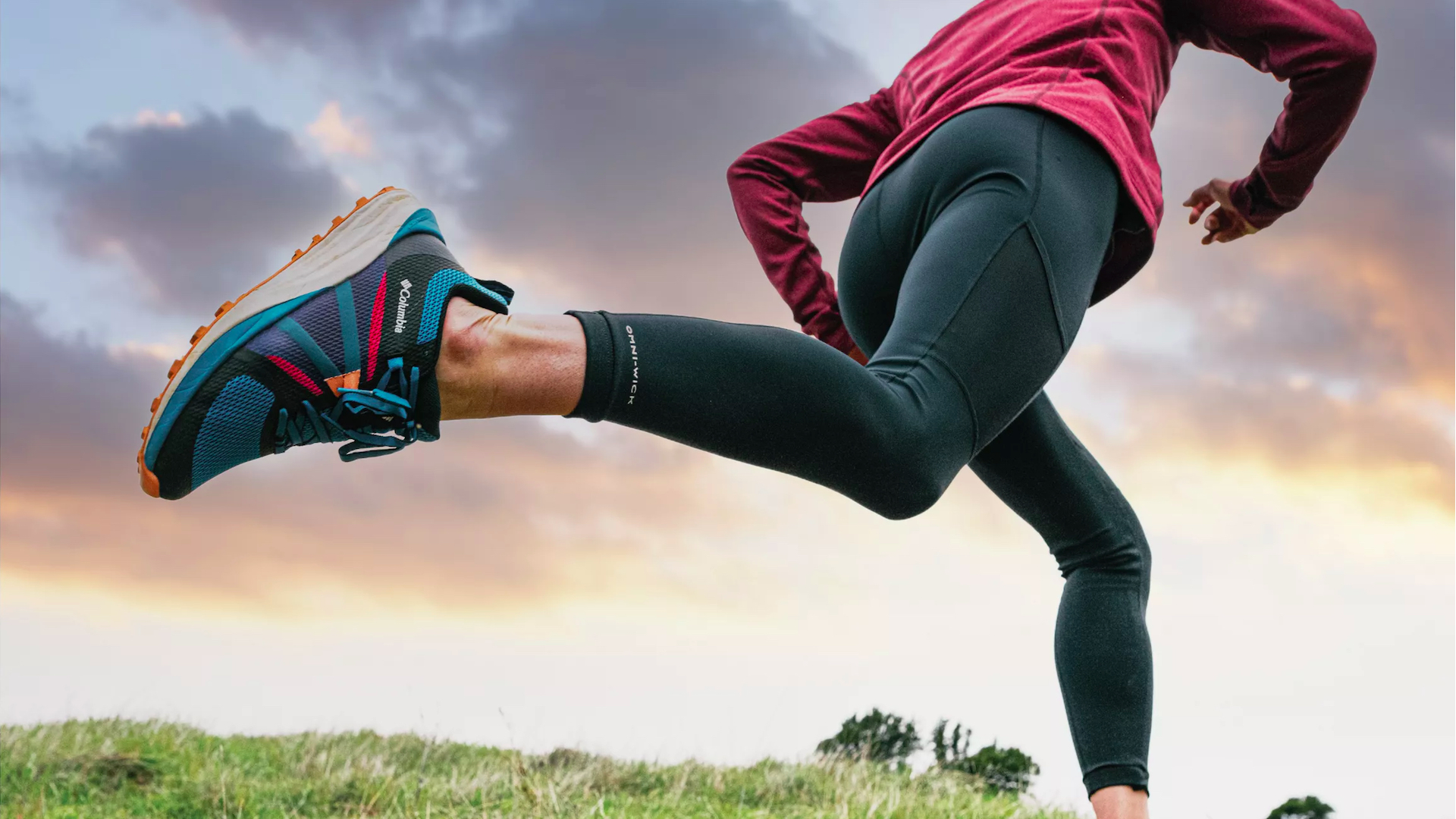
Lacing
Most budget running shoes have a traditional flat or semi-flat lace with a small amount of give in it to achieve a secure fit. Some now use skinny laces (not as easy to use with running gloves on), some have stretchy laces (as with Marmite, some love them, some hate them). Laces are easy to change if you prefer a different sort.
Weight
Some budget running shoes can be a bit heavier than the highly priced ones, but not always. As with all running gear, weight is a fine balance between the super-light materials that enhance speed and reduce effort, and durability for the many miles you want to get out of your running shoes. It’s quite a good idea to train in a heavier, more robust pair and then whiz along in a lighter shoe come race day, provided you know they fit just as comfily.
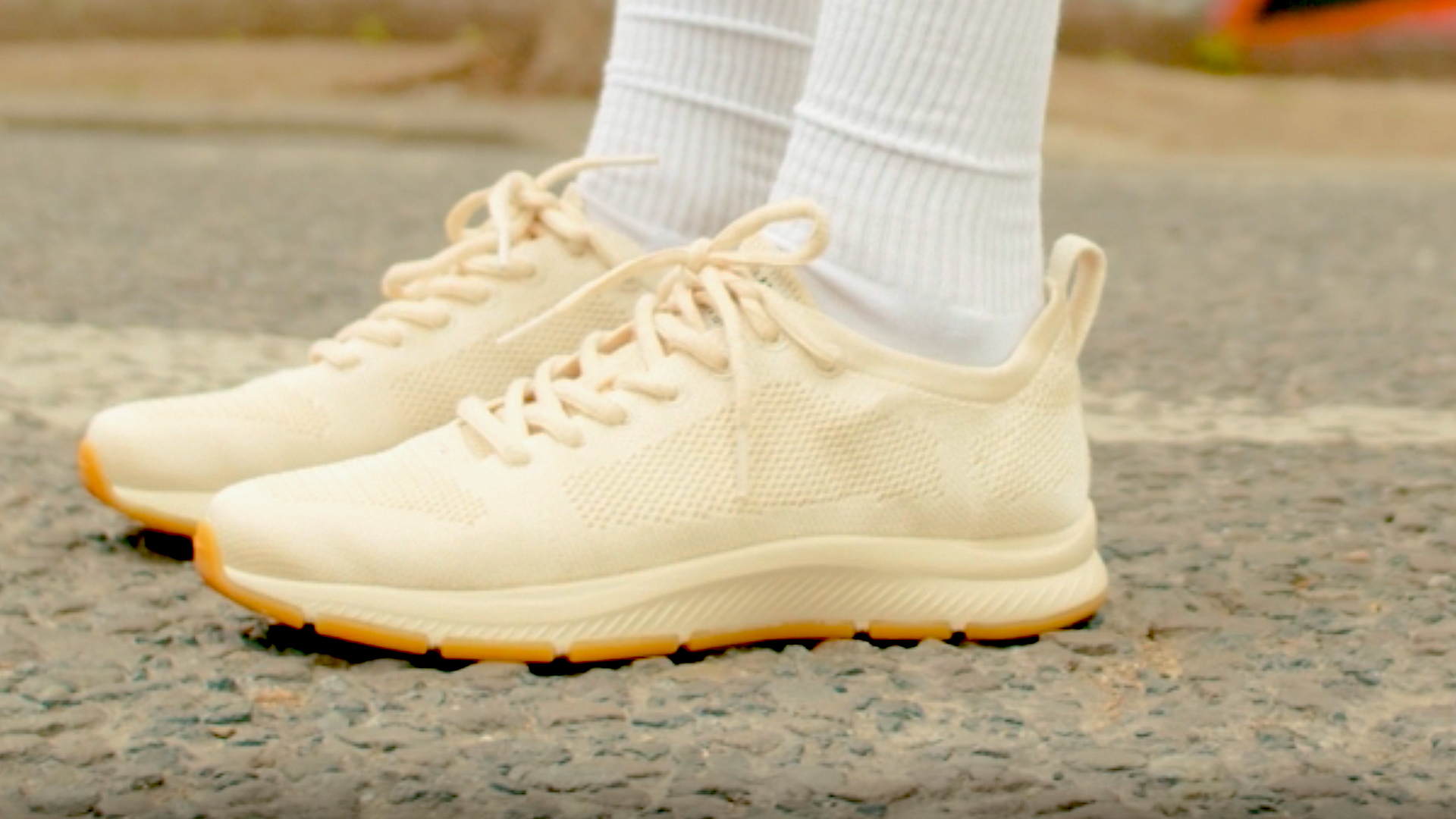
Breathability
The more or wider mesh the shoe has, the more breathable it is likely to be, which is great if you generally run in hot places or get very sweaty feet. It will also drain well after running through puddles. A very breathable upper is less welcome in the cold and snow, a more water resistant material is good for this type of climate or weather.
Eco-friendliness
It’s really fantastic to see many more eco-friendly, recycled and sustainable materials and manufacturing processes being used in the making of running shoes. We have indicated where brands have stated as such, and highlighted when they have not mentioned it. This doesn’t mean the brand is not doing anything environmentally friendly, we just want to encourage this as something brands should be proud of and list as part of the benefits of their products so we can all make a more informed choice.
FAQs
If you're shopping for a new pair of running shoes, you'll probably have some questions. Here are a few of the most frequently asked.
Why shouldn't I get a waterproof running shoe?
Usually the water just gets in over the top and then can’t get out, resulting in trench foot and a very heavy, squelchy shoe. For most situations it’s best to have a non-waterproof road-to-trail running shoe so the water can drain out. Instead, waterproof socks are a good idea for cold or snowy weather but these aren’t always as comfy as your favorite running socks.
What do I do with my old running shoes?
You don't have to toss your old running shoes in the trash. Your local running store may well have a recycling program that collects worn-out shoes and sends them to be processed. Alternatively, if you have a lot of footwear to dispose of, or you can arrange a drive with your running club, you can order a Zero Waste box from Terracycle, which includes a postage label to return it. It's not cheap, but the price would be reasonable if several people chip in.
If you have a Nike store nearby, you can also drop off your old running shoes there. Most stores will accept any brand of athletic shoes in the Reuse a Shoe program, but not boots or ones with metal (so no cleats).
If you're in the UK, Runners Need has in-store collection boxes for used shoes and sportswear, which will be recycled or re-used as part of the Recycle My Run scheme. You can also send your shoes to Jog On, which is a collaboration between SportsShoes.com and Evri to redistribute used shoes to people in need.
All the latest inspiration, tips and guides to help you plan your next Advnture!
The co-founder and former editor of Trail Running magazine, Claire now runs the YouTube channel Wild Ginger Running, creating films about trail- and ultra-running advice, inspiration, races and gear reviews. An award-winning journalist, writing for outdoor and adventure sports magazines and websites, Claire's first book, The Ultimate Trail Running Handbook (5k to 50k), is out now. Her second, The Ultimate Ultra Running Handbook (50k to 100 miles), is out Autumn 2024. Claire also speaks and presents at events and races.
- Charlie LyonAdvnture contributor
